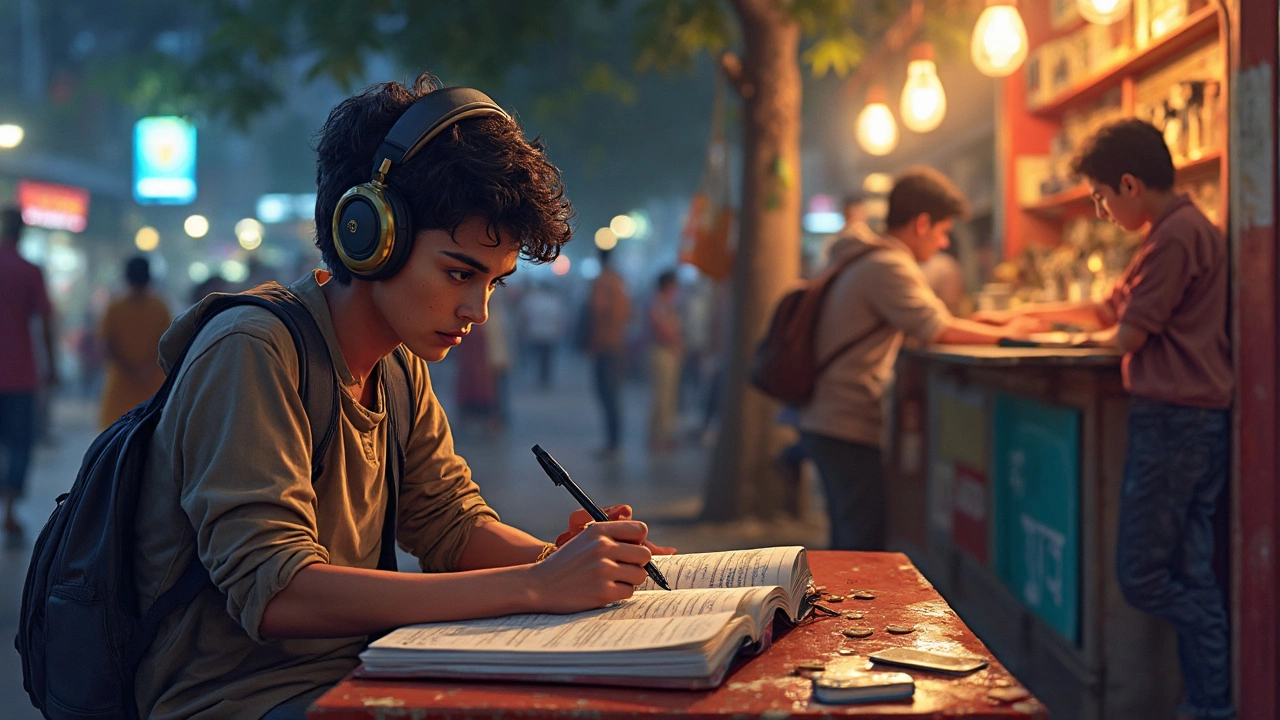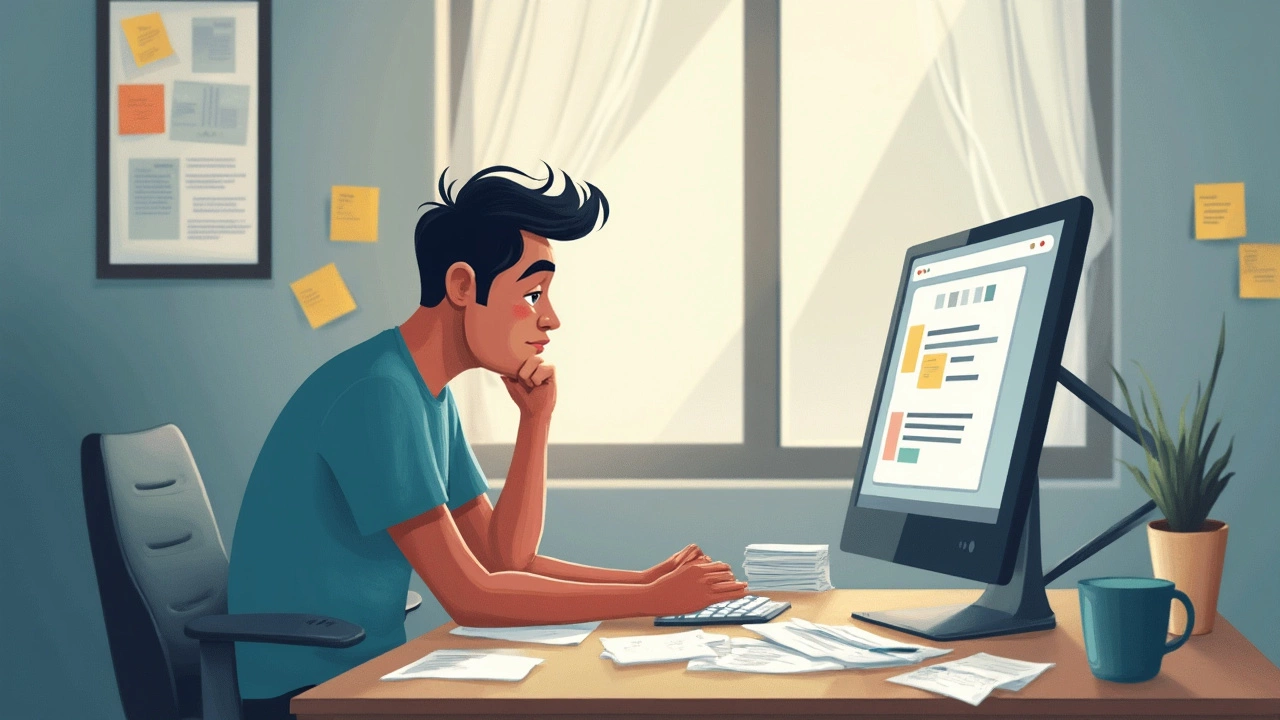Kids with ADHD stand out early on—restless, forgetful, maybe always getting in trouble at school. But here’s the kicker: ADHD isn’t a flat line. It’s not like issues start at age six and stay the same forever. Some years, living with ADHD feels like clinging to a roller coaster; other times, it’s more like a regular inconvenience.
What makes one age harder than another? It’s not just how the brain works. You’ve got school demands, puberty hormones, social drama, or adult responsibilities piling up. All these things can crank up the pressure and make symptoms a hundred times tougher to deal with.
Watching your child flounder in third grade or seeing a teenager struggle with friendships and grades can feel overwhelming. Even adults, who think they’re supposed to have it figured out, can hit unexpected walls. The real trick is knowing which ages usually feel hardest—and what you can do to smooth the road in those years.
- Why ADHD Looks Different Across Ages
- The Peak Age for Tough Symptoms
- Challenges in Teen Years
- Adulthood Surprises
- Practical Tips for Every Stage
Why ADHD Looks Different Across Ages
ADHD isn’t a one-size-fits-all deal. What you see in a seven-year-old is a whole different story than what shows up in a college student or a grown adult. The main issue? The brain changes, but so do the expectations at school, work, or home.
Most kids with ADHD show signs before they hit double digits. In school, it’s usually the classic stuff: can’t sit still, talks non-stop, skips from one activity to another. But as kids inch into the teen years, hyperactivity sometimes fades. Suddenly, it’s all about zoning out, losing track of homework, or feeling overwhelmed by small tasks. Adults might not look restless at all — they’re just stressed, always late, or juggling a to-do list that never ends. It’s common for symptoms to shift and for people to find new ways to hide or cope as they get older.
Check out how symptoms can shake out in different age groups:
- Children: Super bouncy, talkative, trouble following rules or routines, forgetful with basics like lunchboxes or books.
- Teens: Struggling to keep up with schoolwork, losing things, more emotional ups and downs, fighting with parents or teachers.
- Adults: Trouble meeting deadlines, always misplacing keys or paperwork, struggles with managing time, feeling internally restless.
Here’s a quick glance at how ADHD shows up by age:
| Age Group | Main Challenges |
|---|---|
| Childhood | High energy, trouble following directions, distractibility, impulsive acts |
| Teen Years | Organization troubles, emotional ups and downs, risky behavior, academic trouble |
| Adulthood | Disorganization, chronic lateness, forgetfulness, work or relationship stress |
Bottom line: The core problem—difficulty paying attention and controlling impulses—stays the same, but how it shows up changes a lot over time. If you’re looking at someone and wondering if ADHD might be the reason they’re struggling, don’t get stuck on the kid stereotype. ADHD grows and shifts as people do.
The Peak Age for Tough Symptoms
If you’re trying to pin down when ADHD feels the hardest, most research points straight at late elementary school and early middle school, usually between ages 7 and 12. It’s not just kids being kids—it’s the combo of schoolwork ramping up, teachers expecting more, and suddenly having to juggle a ton of rules and tasks. Kids who coasted in first or second grade often hit a wall around third or fourth because the structure and focus required jumps up big time.
Studies say about 6-9% of kids in this age group get diagnosed with ADHD, but loads more might struggle in silence, missing early help. The symptoms—like fidgeting, not being able to sit still, zoning out, missing homework—hit their peak and stick out more because other kids are focusing better and following the rules. This is often the point where parents hear from teachers, "Your child can't sit still" or "They never finish their work," and the stress is real for the whole family.
Check out how the load really shifts in these years:
| Age | Common School Expectation | ADHD Challenge |
|---|---|---|
| 7-9 | Independently complete homework; follow classroom routines | Forget assignments, interrupt class, trouble organizing |
| 10-12 | Multi-step projects; manage time and deadlines | Procrastinate, lose track of instructions, high frustration |
If school feels like a non-stop battle, you're not alone. Around fourth or fifth grade, ADHD symptoms become hardest for most families. This is when social issues can also hit harder. Kids with ADHD may feel left out or be labeled 'troublemakers.' Their self-esteem can take a direct hit. It’s often the breaking point that leads families to finally seek out therapy or support services.
If you’re navigating this, practical stuff helps, like setting up routines or working with teachers for extra support. Don’t be afraid to check in with a doctor or counselor. Early help here can make the teenage years a little less rocky later on.

Challenges in Teen Years
The teenage years can be brutal for anyone, but if you throw ADHD into the mix, things can get messier real quick. Schoolwork gets harder, everyone expects more independence, and social circles start to matter a lot. That’s a recipe for stress even without trouble focusing, staying organized, or managing impulses.
For teens with ADHD, the rules change almost overnight. Suddenly, teachers might stop giving reminders, schedules get packed, and friends might not get why you flake or talk out of turn. At the same time, puberty messes with your mood and energy levels. Some studies actually show that over 80% of teens with ADHD have trouble with executive functioning, like planning and finishing tasks. That means stuff like homework, chores, and remembering appointments become major hurdles.
Here’s how some of the numbers stack up:
| Challenge | ADHD Teens (%) | Non-ADHD Teens (%) |
|---|---|---|
| Struggle with Organization | 76 | 31 |
| Dropped Grades | 52 | 22 |
| Conflict with Peers | 63 | 26 |
| Risky Behaviors* | 36 | 15 |
*Risky behaviors include things like impulsively driving too fast, experimenting with substances, or breaking rules.
There’s also peer pressure. Teens with ADHD often feel left out or misunderstood, which can lead them to take risks just to fit in. Add in emotional ups and downs, and no wonder this is the age when a lot of parents feel lost and teens feel exhausted.
What helps? Getting support in and out of school. Things like having a planner that actually gets used, setting up reminders (even simple phone alarms), and routines that stick. Therapy that focuses on building social skills and coping tactics is game-changing, too. In the real world, it’s not about "fixing" every symptom, but giving these teens tools that make life a bit less chaotic.
Adulthood Surprises
Folks think once you turn eighteen, you magically outgrow ADHD. Totally wrong. In fact, for a lot of people, symptoms actually ramp up when they hit adulthood. Why? Because suddenly, there’s no one checking your homework, organizing your day, or reminding you to pay your bills. All those safety nets from school and home disappear, and you’re on your own.
Did you know about 4.4% of American adults live with ADHD? For plenty, it flies under the radar for years. It only gets noticed when work starts falling apart, relationships get rocky, or everyday stuff—like remembering appointments—feels impossible. The pressure to balance jobs, family, and friends can hit especially hard.
| Area Affected | Common Adult ADHD Challenges |
|---|---|
| Work | Missed deadlines, zoning out in meetings, trouble finishing tasks |
| Home Life | Forgetting chores, unpaid bills, misplaced keys |
| Relationships | Miscommunication, impatience, struggles with routines |
Dr. Russell Barkley, a well-known ADHD expert, puts it this way:
“ADHD may change shape as we get older, but its impact is still serious. Adults struggle with planning, time management, and organization—a different flavor of the same old challenge.”
So, what actually helps? Here are a few tricks that work for many adults with ADHD:
- Use phone reminders and digital calendars for everything—even the basics.
- Break up big projects into tiny steps. If it feels overwhelming, you’ll probably just never start.
- Get an accountability buddy. Telling someone your plan makes it way more likely you’ll stick to it.
- Don’t be afraid to try counseling, coaching, or medication. It’s not about “trying harder”—sometimes your brain needs actual tools.
- Ask for reasonable adjustments at work, like clear deadlines or written instructions.
One surprising fact: adult ADHD often gets diagnosed only when someone’s child gets diagnosed first. Suddenly, all the same symptoms click into place. If this sounds like you, don’t brush it off—lots of adults find help and big life improvements, even years after school is over.

Practical Tips for Every Stage
ADHD shows up differently depending on how old you are—and what you’re dealing with. Here’s what can help, whether you’re a kid, a teen, or an adult:
- ADHD in Kids: Build routines that make mornings and bedtimes almost automatic. Use calendars, timers, and clear visual reminders. Give really short and direct instructions. And keep rewards simple—a high-five now works better than a promise for a treat next week.
- For School-Age Children: Work closely with teachers. Ask about classroom support, like sitting closer to the front, extra breaks, or checklists for assignments. A 2023 survey found that kids with accommodations improved their grades by up to 30% over the school year.
- Teens: Keep communication open but don’t sound like a drill sergeant. Help break down big projects into bite-sized tasks. Try using apps for reminders instead of old-school planners. Watch for signs of anxiety or depression—it can sneak in and make everything worse. More than half of teens with ADHD also deal with another mental health condition, so it’s worth getting the right support.
- College and Young Adult Years: Learn time management—it’s a game-changer. Set alarms for everything, like classes or bill payments. Find a study buddy who actually gets things done. And if you’re struggling, college disability services aren’t just for learning disabilities; they can offer extended exam times or quieter spaces, too.
- Adults: Prioritize the basics—enough sleep, regular meals, and some kind of exercise. Use what works: digital calendars, sticky notes, or even daily text check-ins with a friend. If work is chaos, ask about adjustments like more structured check-ins or flexible hours. Over 80% of adults with ADHD say external structure—deadlines, routines, reminders—helps them get through the day.
| Strategy | Kids | Teens | Adults |
|---|---|---|---|
| Visual Reminders | 70% | 60% | 50% |
| Breaking Tasks Into Steps | 65% | 75% | 80% |
| External Accountability (like buddy check-ins) | 55% | 68% | 82% |
| Physical Activity | 73% | 62% | 66% |
If just one tip from this list clicks, it’s worth sticking with it. Don’t try changing everything at once. Find that small thing that makes life a little less stressful, and build from there. ADHD isn’t about being lazy or careless—it’s about figuring out what actually helps you get through the day.
